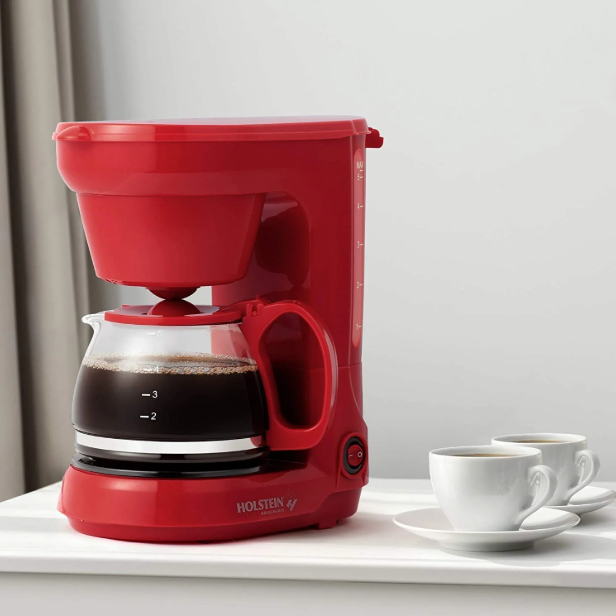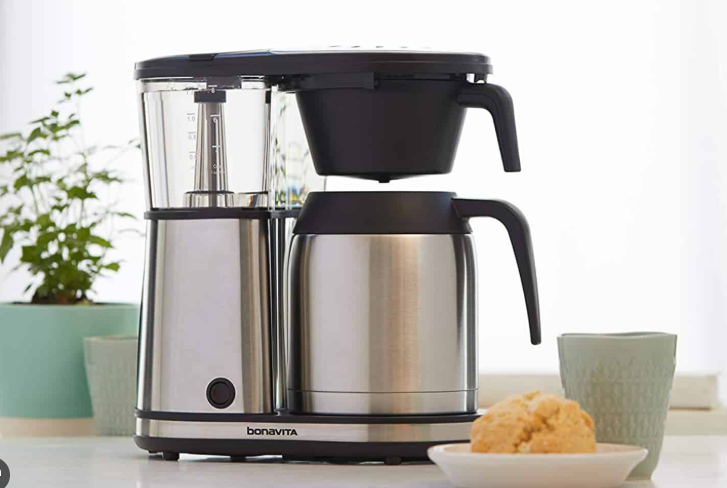Ensuring your brewing experience is both enjoyable and secure starts with following key coffeemaker safety tips. A coffeemaker is a staple in many kitchens, but improper use can lead to accidents or damage. By implementing these coffeemaker safety tips, you can protect yourself, your family, and your appliance while enjoying delicious coffee. This comprehensive guide covers the most critical coffeemaker safety tips, alongside related advice on coffeemaker setup, how to use a coffeemaker, and coffeemaker maintenance. Whether you’re using a drip model, single-serve machine, or a portable coffeemaker, these coffeemaker safety tips will help you brew with confidence. Let’s dive into how to make safety first with these essential coffeemaker safety tips.
Why Coffeemaker Safety Tips Matter
Understanding why coffeemaker safety tips are crucial begins with recognizing the potential risks. Coffeemakers involve hot water, electricity, and sometimes glass components, which can pose hazards if mishandled. Adhering to coffeemaker safety tips prevents burns, electrical shocks, and appliance damage, ensuring a worry-free brewing experience.
These coffeemaker safety tips also protect your investment. Proper handling reduces wear, extending the lifespan of your machine alongside regular coffeemaker maintenance. In 2025, modern coffeemakers come with advanced features like auto-shutoff, but following coffeemaker safety tips enhances their built-in protections.
For families, coffeemaker safety tips are especially vital to keep children safe from hot surfaces or cords. Whether you’re setting up a new machine or refining your routine, these coffeemaker safety tips ensure every brew is safe and enjoyable. For more on maintaining your appliance, check our coffeemaker resources.
Key Risks to Avoid with Coffeemaker Safety Tips
The primary risks addressed by coffeemaker safety tips include electrical hazards from improper plugging, burns from hot components, and spills from overfilling. Glass carafes can break if mishandled, and cords pose tripping risks. By following these coffeemaker safety tips, you mitigate these dangers, ensuring a secure brewing environment.
Top Coffeemaker Safety Tips for Everyday Use
Here are the most important coffeemaker safety tips to incorporate into your routine, designed to keep you safe while brewing delicious coffee.
1. Place on a Stable, Heat-Resistant Surface
One of the top coffeemaker safety tips is to position your machine on a flat, stable, heat-resistant surface. This prevents tipping, especially for heavier models with glass carafes. Ensure the area is away from counter edges to avoid knocks, a critical coffeemaker safety tip for households with kids.
During coffeemaker setup, check for level placement to prevent spills. This coffeemaker safety tip also applies to a portable coffeemaker, which needs a firm base when used on the go.
2. Unplug When Not in Use
A fundamental coffeemaker safety tip is to unplug your machine when not brewing or during coffeemaker cleaning. This reduces the risk of electrical shocks, especially when handling wet components. Unplugging during storms or long absences is another smart coffeemaker safety tip to prevent power surge damage.
This coffeemaker safety tip is particularly important for WiFi-enabled models, where connectivity might tempt you to leave it plugged in. Always prioritize this coffeemaker safety tip for electrical safety.
3. Handle Hot Components with Care
Hot water and carafes pose burn risks, so one of the key coffeemaker safety tips is to use oven mitts when handling hot parts. After brewing, let the machine cool before touching the carafe or filter basket, a vital coffeemaker safety tip to avoid scalding.
When learning how to use a coffeemaker, be cautious with steam from espresso machines. This coffeemaker safety tip ensures safe handling during operation.
4. Avoid Overfilling the Reservoir
Overfilling can cause spills, leading to burns or electrical issues, making this a critical coffeemaker safety tip. Always use the marked lines on the reservoir when filling, a step emphasized in how to brew coffee in a coffeemaker. For single-serve machines, stick to recommended pod sizes, another essential coffeemaker safety tip.
If spills occur, clean immediately to maintain coffeemaker safety and prevent slippery surfaces.
5. Use Auto-Shutoff Features
Modern machines in 2025 often include auto-shutoff, a must-have in coffeemaker safety tips. This feature turns off the machine after a set time, reducing fire risks if forgotten. Check your model’s settings during coffeemaker setup to ensure this coffeemaker safety tip is activated.
For models without auto-shutoff, manually turn off after use, reinforcing this coffeemaker safety tip for older machines.

Coffeemaker Safety Tips for Specific Situations
Beyond general use, certain scenarios require tailored coffeemaker safety tips to ensure protection.
Coffeemaker Safety Tips for Families with Children
A crucial coffeemaker safety tip for families is to keep the machine out of children’s reach. Store it high or use child locks on programmable models. Teach kids about hot surfaces, a key coffeemaker safety tip to prevent burns.
Secure cords to avoid pulling, another important coffeemaker safety tip for child safety. This ensures your kitchen remains a safe space for all.
Coffeemaker Safety Tips for Cleaning
When performing coffeemaker cleaning, always unplug first, a top coffeemaker safety tip to avoid shocks. Use non-abrasive tools to clean parts, preserving the machine’s integrity.
If using vinegar, ventilate the area to avoid inhaling fumes, another coffeemaker safety tip. Rinse thoroughly to ensure no residue affects your next brew, aligning with coffeemaker safety.
Coffeemaker Troubleshooting and Safety
Coffeemaker troubleshooting often intersects with coffeemaker safety tips. If the machine doesn’t brew, check for power issues but ensure it’s unplugged before inspecting, a vital coffeemaker safety tip.
For leaks, tighten seals but avoid touching hot parts, another coffeemaker safety tip. If descaling, follow coffeemaker troubleshooting steps safely with proper ventilation.
Regular checks during coffeemaker troubleshooting prevent hazards, reinforcing coffeemaker safety tips for long-term use.
Preventing Issues with Coffeemaker Safety Tips
Avoid coffeemaker troubleshooting by adhering to coffeemaker safety tips like not overfilling or forcing parts. Regular maintenance reduces the need for fixes, aligning with coffeemaker safety tips.
Coffeemaker Maintenance for Enhanced Safety
Coffeemaker maintenance ties closely to coffeemaker safety tips. Inspect cords regularly for frays, a key coffeemaker safety tip to prevent electrical issues. Replace water filters every 1-2 months to avoid clogs, supporting coffeemaker maintenance.
Store your machine in a dry place to prevent mold, another coffeemaker safety tip. Regular descaling with vinegar, as part of coffeemaker maintenance, keeps heating elements safe and efficient.
By combining coffeemaker maintenance with coffeemaker safety tips, you ensure a hazard-free brewing experience.
Seasonal Coffeemaker Maintenance for Safety
In humid seasons, dry components thoroughly during coffeemaker maintenance, a coffeemaker safety tip to avoid mold. In winter, check for water hardness to adjust descaling, ensuring coffeemaker safety.
Portable Coffeemaker Safety Tips
For a portable coffeemaker, coffeemaker safety tips are equally important. Ensure the device is secure during travel, a key coffeemaker safety tip to prevent spills. Use battery-powered models on stable surfaces, even when mobile.
When cleaning a portable coffeemaker, unplug or remove batteries, a critical coffeemaker safety tip. Check for secure lids to avoid leaks, aligning with coffeemaker safety for portable use.
These coffeemaker safety tips make a portable coffeemaker safe for on-the-go brewing.
Choosing a Safe Portable Coffeemaker
Select a portable coffeemaker with spill-proof lids and cool-touch exteriors, a coffeemaker safety tip for travel. Check battery safety for coffeemaker safety compliance.
Coffeemaker Cleaning and Safety
Coffeemaker cleaning is integral to coffeemaker safety tips. Always unplug before cleaning to avoid shocks, a primary coffeemaker safety tip. Use vinegar for descaling, but ensure proper rinsing to prevent residue, aligning with coffeemaker safety.
Clean removable parts with non-abrasive sponges, a coffeemaker safety tip to protect components. Regular coffeemaker cleaning prevents bacterial growth, enhancing coffeemaker safety.

Safe Cleaning Practices
Avoid mixing cleaners like vinegar and bleach, a critical coffeemaker safety tip during coffeemaker cleaning. Ventilate when using vinegar to maintain coffeemaker safety.
How to Use a Coffeemaker Safely
Learning how to use a coffeemaker safely is part of coffeemaker safety tips. Follow the manual’s instructions for your model, ensuring you don’t overload the reservoir, a key coffeemaker safety tip.
When practicing how to brew coffee in a coffeemaker, avoid touching hot parts during operation. Use the pause feature carefully to prevent spills, another coffeemaker safety tip.
These coffeemaker safety tips ensure safe operation while mastering how to use a coffeemaker.
Safe Brewing Techniques
When learning how to brew coffee in a coffeemaker, measure grounds accurately to avoid clogs, a coffeemaker safety tip. Check water levels before starting to maintain coffeemaker safety.
Coffeemaker Tips for Enhanced Safety
Coffeemaker tips that align with coffeemaker safety tips include using filtered water to reduce scaling, which can cause malfunctions. Another coffeemaker tip is to avoid moving the machine while brewing, a coffeemaker safety tip to prevent burns.
Regularly check for firmware updates in smart models, a coffeemaker safety tip to ensure secure operation. For more coffeemaker tips, our brewing tips offer practical advice.
Additional Coffeemaker Tips for Safety
Use a dedicated outlet for your machine, a coffeemaker safety tip to avoid overloading circuits. Teach household members these coffeemaker safety tips for shared use.
Best Coffeemaker Guide: Choosing a Safe Machine
In this best coffeemaker guide, prioritize models with built-in coffeemaker safety tips like auto-shutoff and child locks. Look for sturdy builds in the best coffeemaker guide to ensure stability.
The best coffeemaker guide recommends checking for BPA-free materials for added coffeemaker safety. For model recommendations, our coffeemaker hub has safe options.
Selecting a Safe Coffeemaker
Choose machines with clear safety certifications in the best coffeemaker guide. Ensure features align with coffeemaker safety tips for your needs.
Conclusion: Brew Safely with Coffeemaker Safety Tips
In conclusion, these coffeemaker safety tips ensure your brewing is both delicious and secure. From placing your machine correctly to regular coffeemaker cleaning and coffeemaker maintenance, following coffeemaker safety tips protects you and your appliance. Whether using a home or portable coffeemaker, apply these coffeemaker safety tips for peace of mind. Mastering how to use a coffeemaker safely enhances your experience, making every cup a joy. For more on safe brewing, explore our coffee guide. Stay safe and enjoy your coffee in 2025!
- Key takeaway: Coffeemaker safety tips prevent accidents and extend machine life.
- Pro tip: Regular coffeemaker cleaning enhances safety and performance.
- Safety first: Always follow coffeemaker safety tips for worry-free brewing.